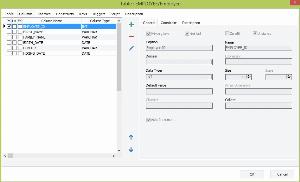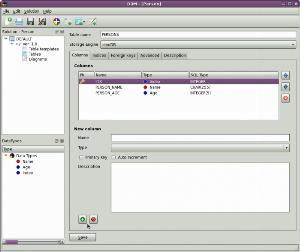Database documentation tools for SQLite
List of tools that allow the documentation (e.g. with descriptions) of schema of your databases.
Database documentation is a set of descriptions of the data, that facilitate management, maintenance, and retrieval of resources. Documentation can take many forms, however, it usually acts as a data catalog that holds detailed information about the table schema, all relationships, data types, etc. Description of datasets as well as single data objects also is referred to as metadata (data about the data).
ERBuilder Data Modeler
ERBuilder Data Modeler allows developers to graphically design databases by using entity relationship diagrams, and automatically generates the most popular SQL databases.
| Data Lineage: | - |
|---|---|
| Runs on: (for desktop): | - |
| Commercial: | Commercial |
| Free edition: |
|
| Allows editing: |
|
| Metadata stored in: | Database comments/extended properties |
| Export: | HTML |
| ER Diagram: |
|
| Dependencies: |
|
Database Deployment Manager
Database Deployment Manager (DDM) tool is a multi-platform tool that allows database administrators and users to create database structures (tables, queries, etc.) using an object-oriented methodology that can be used to populate multiple databases. It further offers documentation of complete database structures.
| Data Lineage: | - |
|---|---|
| Runs on: (for desktop): | - |
| Commercial: | Free |
| Free edition: |
|
| Allows editing: |
|
| Metadata stored in: | Database comments/extended properties |
| Export: | HTML,PDF |
| ER Diagram: |
|
| Dependencies: |
|
Database documentation tools support data management by creating helpful descriptions, meaningful aliases, and annotating data assets with additional elements. The tools capture all the relevant information about the metadata and make it available to the users in a convenient way (tabular or graphical). The features of documentation tools can vary widely. The tools allow users to:
• Facilitate datasets with meaningful descriptions/aliases,
• Create relational diagrams,
• Advance search of resources,
• Track schema changes,
• Document repositories from various sources, through compatibility with many database engines,
• Automatic documentation export to user-friendly formats and easy-to-share formats (HTML, PDF, Excell )
Developers (especially those working on the backend) are constantly faced with questions from non-IT teams or customers about what a given object means. This is because creating and maintaining documentation is not a top priority. However, using documentation tools has many benefits such as:
• Help Data stewards quickly discover database schema,
• Data becomes understandable for non-IT members,
• Documentation as a single source of truth about the data is available to everyone
• Easier implementation for new people working on the repository,
We have selected database documenters that, we believe, are truly noteworthy. We have included both, open-source tools and advanced, professional software (offering trial versions).
 SQL Server
SQL Server
 Oracle
Oracle
 MySQL
MySQL
 PostgreSQL
PostgreSQL
 Amazon Redshift
Amazon Redshift
 Azure SQL Database
Azure SQL Database
 DBT
DBT
 Google Big Query
Google Big Query
 IBM DB2
IBM DB2
 MariaDB
MariaDB
 SAP HANA
SAP HANA
 Snowflake
Snowflake
 SQLite
SQLite
 Teradata
Teradata
 Vertica
Vertica



